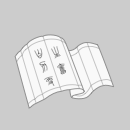
斜交画 反透视的历史 Oblique Drawing 英文原版
¥ 192 8.2折 ¥ 235 九五品
仅1件
广东广州
认证卖家担保交易快速发货售后保障
作者Massimo Scolari
出版社The MIT Press
ISBN9780262527613
出版时间2015-01
印刷时间2015-01
印数1千册
装帧平装
开本20开
纸张轻型纸
页数408页
字数1千字
定价235元
上书时间2024-11-29
- 在售商品 暂无
- 平均发货时间 29小时
- 好评率 暂无
- 最新上架
商品详情
- 品相描述:九五品
- 商品描述
-
基本信息
by Massimo Scolari (Author) , James S. Ackerman (Introduction By) , Jenny Condie Palandri (Translated by)
Series:Writing Architecture
Format:Paperback / softback 408 pages, 340 b&w illus.; 680 Illustrations, unspecified
Publisher:MIT Press Ltd
Imprint:MIT Press
ISBN:9780262527613
Published:30 Jan 2015
Weight:738g
Dimensions:229 x 153 x 21 (mm)
页面参数仅供参考,具体以实物为准
书籍简介
对观点霸权的挑战:研究过去两千年来不同文化使用的其他表现形式。
半个多世纪以来,欧文·潘诺夫斯基(Erwin Panofsky)的《Perspective as Symbolic Form》一直主导着视觉表征的研究。尽管有中心投影或透视图的霸权,但其他同样重要的表示方法也有很多。在古希腊花瓶、庞贝壁画和拜占庭马赛克上都可以看到平行投影;它以历史上的先锋派作品的形式回归,至今仍是中国主流的表现形式。马西莫·斯科拉里在《斜交画》中研究了2000多年的“反透视”视觉表现形式,在他的研究过程中发现,视觉和概念表现是不同文化的意识形态和哲学取向的表现。图像不仅是一种艺术形式,也是一种思想形式,一种生活方式的投射。
大量的图片说明,错觉主义并不是历史上物体的唯yi,甚至不是最好的代表。例如,平行投影可以按比例保留其表示的对象的实际测量值,从而避免了单点透视的变形。斯科拉里分析了非透视画法在前文艺复兴的机器和军事硬件、建筑模型和图纸,以及几何立体插图中的应用。他挑战了帕诺夫斯基的庞贝视角理论。
A challenge to the hegemony of perspective: investigations into other forms of representation used by different cultures over the last two thousand years.
For more than half a century, Erwin Panofsky's Perspective as Symbolic Form has dominated studies of visual representation. Despite the hegemony of central projection, or perspective, other equally important methods of representation have much to tell us. Parallel projection can be found on classical Greek vases, in Pompeiian frescoes, in Byzantine mosaics; it returned in works of the historical avant-garde, and remains the dominant form of representation in China. In Oblique Drawing, Massimo Scolari investigates “anti-perspective” visual representation over two thousand years, finding in the course of his investigation that visual and conceptual representations are manifestations of the ideological and philosophical orientations of different cultures. Images prove to be not just a form of art but a form of thought, a projection of a way of life.
Scolari's generously illustrated studies show that illusionistic perspective is not the only, or even the best, representation of objects in history; parallel projection, for example, preserves in scale the actual measurements of objects it represents, avoiding the distortions of one-point perspective. Scolari analyzes the use of nonperspectival representations in pre-Renaissance images of machines and military hardware, architectural models and drawings, and illustrations of geometrical solids. He challenges Panofsky's theory of Pompeiian perspective and explains the difficulties encountered by the Chinese when they viewed Jesuit missionaries' perspectival religious images.
Scolari vividly demonstrates the diversity of representational forms devised through the centuries, and shows how each one reveals something that is lacking in the others.
作者简介
马西莫·斯科拉里是著名的建筑历史学家。他也是编辑、设计师、艺术家和飞行员。他曾任教于威尼斯建筑大学、康奈尔大学、库珀联盟学院、建筑与城市研究协会、维也纳工业大学、哈佛大学和耶鲁大学。
Massimo Scolari is a prominent architectural historian. He is also an editor, designer, artist, and pilot. He has taught at the Istituto Universitario di Architettura di Venezia (IUAV), Cornell University, Cooper Union, Institute for Architecture and Urban Studies (IAUS), Technische Universität Vienna, Harvard University, and Yale University.
— 没有更多了 —
















以下为对购买帮助不大的评价